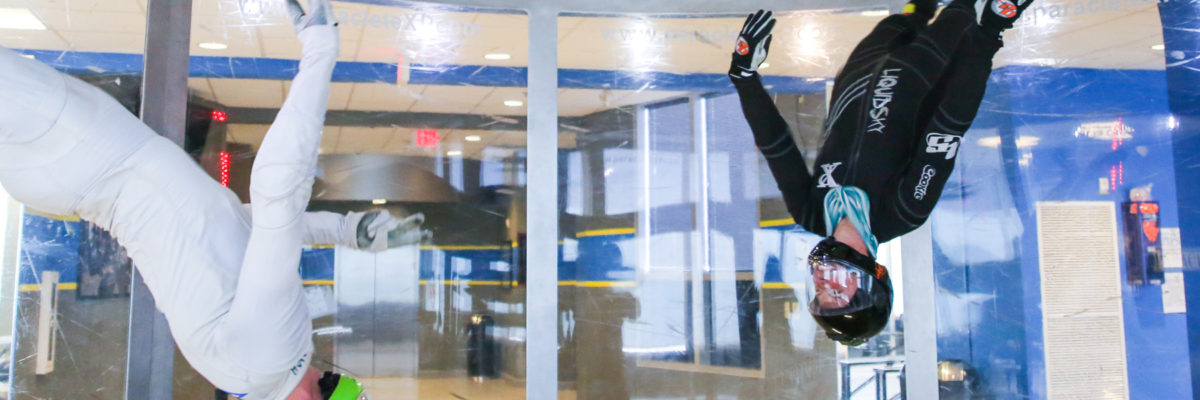
How To Become a Tunnel Ninja
Wednesday, September 21, 2016
- Team XP
- 9/21/16
- 0
- Indoor Skydiving
They make it look so easy, but y’know what? What you see in all those amazing videos of Leo Volkov and Inka Titto didn’t happen overnight. These undisputed kings and queens of the “windytube” started exactly where you are: with zero minutes of flight time.
Want to work towards joining them at the top of the pile someday? Here’s how to get started on the right foot.
1. Accept And Respect The Progression.
Even if you’re an inveterate skydiver, you’re going to take the same path to progression as everybody else: belly to back to sit to head-down. Along that general path, you’ll be introduced to dynamic flying, which introduces the transitions and multi-directional configurations that make wind tunnel flying so beautiful a sport in and of itself.
Especially if you’re totally sure you can do this stuff already–which, as a beginner, means that you’re a crash-happy liability to yourself and everybody in the tube with you–it’s vital to respect this progression. The strictness may seem excessive if you can already execute these moves in the sky. However, a flyer’s performance in the wind tunnel demonstrates a looming difference: when your working space shrinks to just a few feet, there’s not a lot of room for error.
2. Bring What You Need.
If you don’t have a kit, don’t worry: helmets, goggles and jumpsuits are available to borrow from any tunnel you visit (including, of course, ours). If you do have them, bring them. It goes without saying that gear you know and love is infinitely more comfortable.
Pro tip: If your helmet has air holes in it (or if you’re borrowing one of ours) and your hair measures more than an inch long, do yourself a favor and bring a Buff or a light stocking cap. It’ll prevent your hair from sneaking through the holes and tying itself in knots on the outside of the helmet, which is not a ninja look.
3. Be Consistent, But Pace Yourself.
Make no mistake: learning to fly in a wind tunnel takes time. The more time you can dedicate to staying in the airflow, the better off you’ll be. Many coaches suggest flying at least once a week.
A good rule of thumb is to start with a couple of ten-to-fifteen-minute sessions with a rest in between. When you can fly that easily, add another one. To get the most out of your time, make sure you’re operating well within your comfort envelope–not adding time to the point of exhaustion. (Hint: That is a small envelope, at the beginning.)
4. Relax And Go Easy On Yourself.
Most new wind tunnel flyers are very tense, doing their best to muscle and flip through movements and transitions. The effort is enervating.
Everyone starts tense–it’s part of the journey–and loads of very experienced students struggle with the pursuit of ease, as well. That said: The sooner you can ease up and work with, not against the wind, the smoother and more efficient your tunnel progression will be.
Don’t fight yourself, either. Even if you’re not painfully shy, the wind tunnel is a distinctly humbling experience. You’re always surrounded by a watchful audience, after all, with glass and eyes on all sides, executing high-precision moves under physical stress. It’s a challenge to keep your self-confidence, but do keep smiling.
Someday, you might be wearing that smile to accept a tunnel flying trophy, you know. Better start practicing.
Tags: wind tunnel
Copyright © 2024, Paraclete XP Indoor Skydiving, All Rights Reserved.
DropZone Web Design & Marketing by Beyond Marketing, LLC
